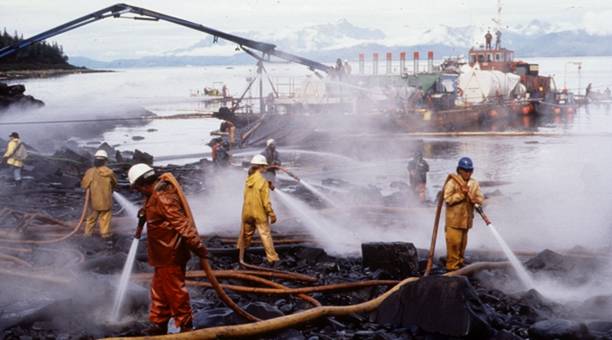|
|
|
| Major Sources of water pollution | |
|
Major Sources of water pollution. |
||
| 1. Petroleum Products Oil and chemicals derived from oil are used for fuel, lubrication, plastics manufacturing, and many other purposes. These petroleum products get into water mainly by means of accidental spills from ships, tanker trucks, pipelines, and leaky underground storage tanks. Many petroleum products are poisonous if ingested by animals, and spilled oil damages the feathers of birds or the fur of animals, often causing death. In addition, spilled oil may be contaminated with other harmful substances, such as polychlorinated biphenyls. | ||
 Oil Spill Clean-up. |
||
| 2. Pesticides and Herbicides Chemicals used to kill unwanted animals and plants, for instance on farms or in suburban yards, may be collected by rainwater runoff and carried into streams, especially if these substances are applied too lavishly. Some of these chemicals are biodegradable and quickly decay into harmless or less harmful forms, while others are nonbiodegradable and remain dangerous for a long time. |
||
 Pesticides add in farm. |
||
| 3. Heavy Metals Heavy metals, such as copper, lead, mercury, and selenium, get into water from many sources, including industries, automobile exhaust, mines, and even natural soil. Like pesticides, heavy metals become more concentrated as animals feed on plants and are consumed in turn by other animals. When they reach high levels in the body, heavy metals can be immediately poisonous, or can result in long-term health problems similar to those caused by pesticides and herbicides. For example, cadmium in fertilizer derived from sewage sludge can be absorbed by crops. If these crops are eaten by humans in sufficient amounts, the metal can cause diarrhea and, over time, liver and kidney damage. Lead can get into water from lead pipes and solder in older water systems; children exposed to lead in water can suffer mental retardation. |
||
|
|
||